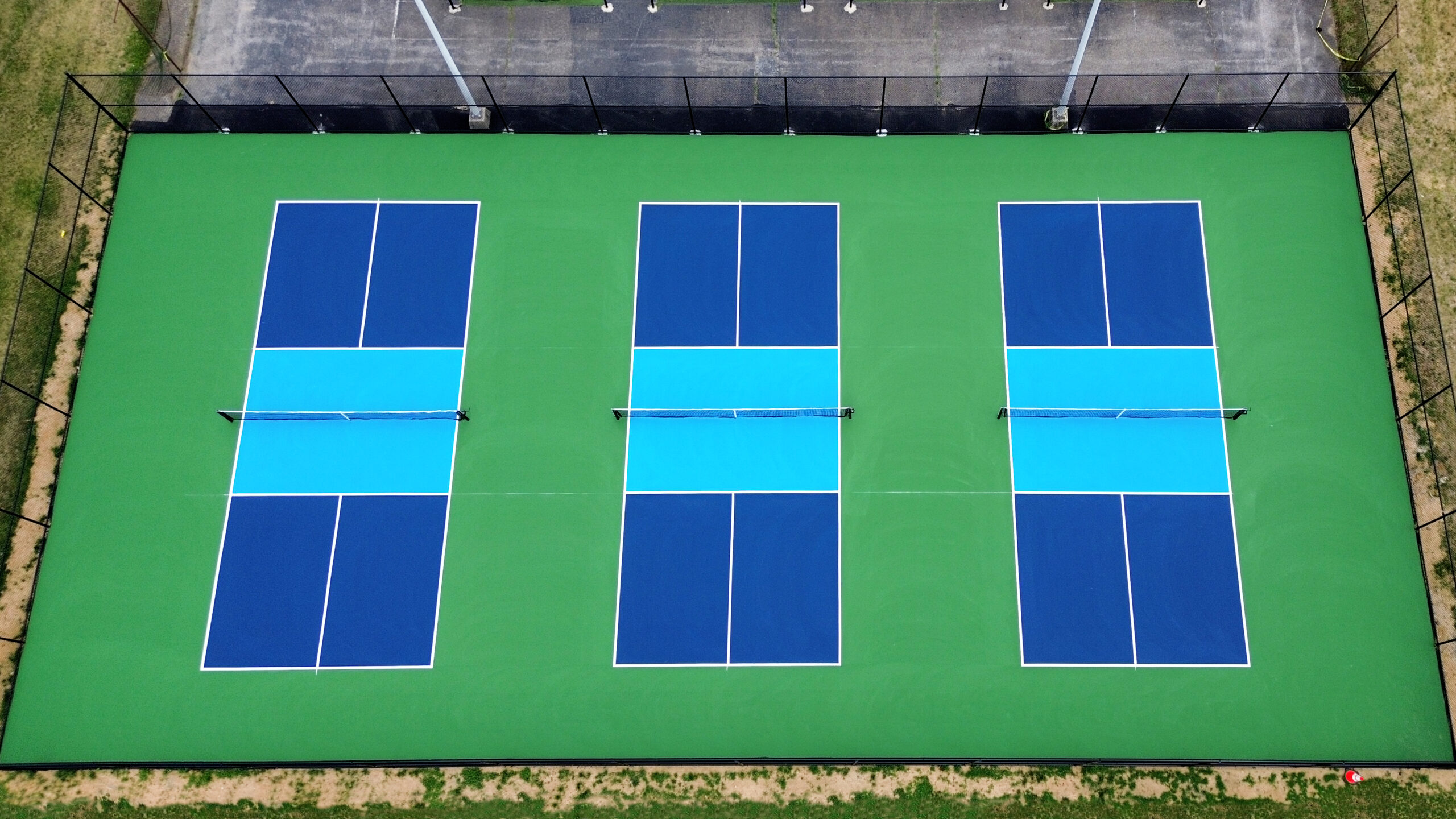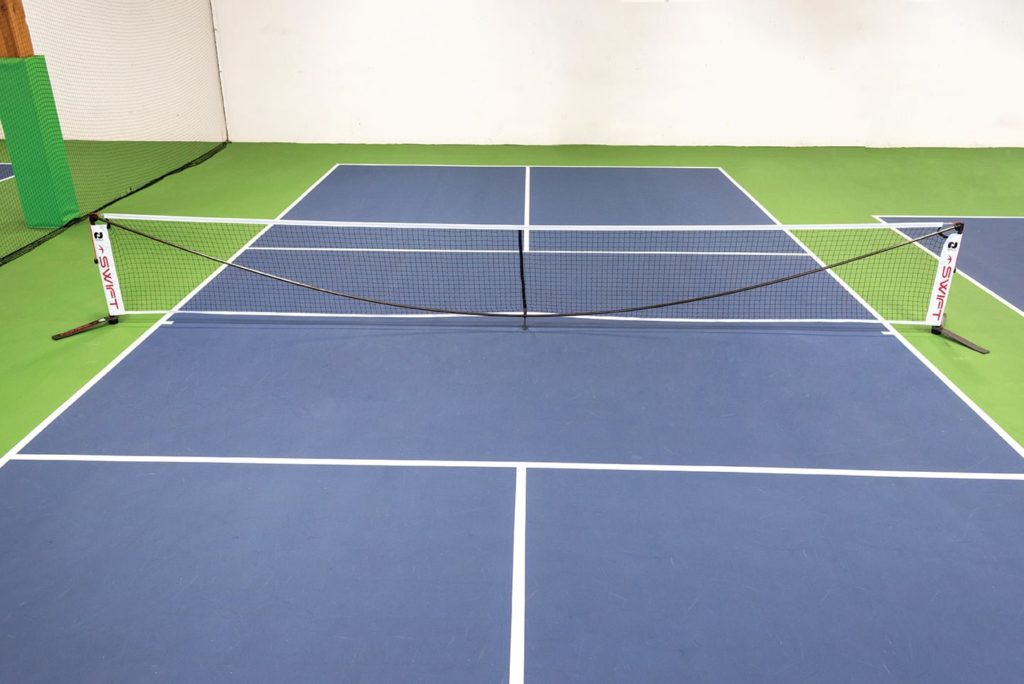Sustainable Practices in Pickleball Court Building And Construction You Ought To Know
As the popularity of pickleball continues to climb, so also does the need for sustainable practices in court building. This technique not just addresses environmental concerns but also improves the longevity and performance of the courts. From picking eco-friendly products to executing effective drainage and energy-saving lighting solutions, there are numerous strategies to consider. The effect of these practices extends much beyond the court itself. Understanding just how each aspect adds to a much more lasting future invites better exploration right into the complex balance in between recreational development and environmental stewardship.
Choosing Eco-Friendly Products
Picking environment-friendly materials is a vital action in the construction of sustainable pickleball courts. The option of sustainable products not only decreases environmental effect yet additionally enhances the longevity and performance of the court. Key materials include reused rubber for the surface area, which provides exceptional toughness and shock absorption while diverting waste from landfills.
Additionally, using locally sourced materials decreases transport exhausts and sustains local economic situations. Pickleball court construction. For instance, using indigenous woods for secure fencing and seats can offer a sustainable aesthetic while guaranteeing strength versus the components.
Integrating permeable materials for court structures can additionally add to sustainability by permitting all-natural water drain and reducing drainage. These choices not just protect neighborhood environments but also advertise healthier play settings.
Efficient Drain Solutions
While the option of environmentally friendly products is vital, implementing effective water drainage services is similarly vital for maintaining lasting pickleball courts. Appropriate water drainage not only shields the court surface from water damages yet also reduces disintegration and drainage, promoting ecological honesty.
Effective drain systems can consist of absorptive paving, which permits water to penetrate the ground as opposed to pooling externally. This lowers the possibility of standing water, which can result in mold and other maintenance issues. Additionally, incorporating strategically placed drain networks and swales can guide excess water away from the court area, ensuring a dry having fun surface area and preventing dirt disintegration.
Using native greenery in the landscape design around the courts can even more improve drainage by soaking up excess water and minimizing runoff. These plants call for much less watering and promote biodiversity, aligning with lasting methods.
Moreover, it is critical to consistently maintain the drain system to guarantee its long-lasting effectiveness. This includes clearing up debris and tracking for blockages. By prioritizing reliable drainage options, pickleball court erectors can considerably add to the sustainability and longevity of the facility, eventually benefiting both gamers and the setting.
Energy-Efficient Illumination Options
As the need for pickleball proceeds to grow, integrating energy-efficient lighting choices right into court layout has become progressively essential for sustainability. Typical lights systems frequently take in extreme power, adding to higher operational costs and environmental effect. dig this Adopting modern, energy-efficient technologies is vital for both new buildings and remodellings.
LED (Light Emitting Diode) lighting stands out as a premier choice due to its longevity and power financial savings (Pickleball court construction). Compared to conventional lights, LEDs make use of around 75% less energy and can last approximately 25 times longer, significantly minimizing maintenance prices. The directional nature of LED illumination minimizes light pollution, ensuring that illumination is concentrated on the court rather than surrounding locations.

Sustainable Surface Area Alternatives
Discovering sustainable surface choices for pickleball courts has actually acquired traction among home builders and gamers alike. The focus on eco-friendly products not just straightens with the growing environmental understanding yet additionally boosts the performance and toughness of the courts.
This material gives superb shock absorption, minimizing the danger of injuries for gamers while promoting sustainability. These tiles are very easy to change and mount, and their adaptability enables for various court arrangements.
Natural turf courts are additionally arising as a sustainable option, advertising biodiversity and reducing the heat island effect. Nevertheless, they require routine maintenance and water, which might not straighten with all sustainability objectives.

Water Conservation Strategies

One more efficient method entails the setup of rainwater harvesting systems. These systems save and accumulate rainwater for use in keeping court surface areas and landscape design. This technique not just saves drinkable water however additionally minimizes reliance on metropolitan sources.
Moreover, utilizing drought-resistant landscaping why not find out more around the courts is crucial. Native plants call for much less water and are better adapted to regional environment conditions, therefore lowering total water consumption. Furthermore, making use of efficient irrigation systems, such as drip watering, makes certain that water is delivered directly to plant roots, minimizing evaporation and waste.
Final Thought
Including lasting practices in pickleball court building dramatically contributes to ecological conservation and source efficiency. By prioritizing these methods, the building and construction of pickleball courts can straighten with more comprehensive environmental goals while advertising longevity and functionality within communities.
As the popularity of pickleball continues to rise, so too does the requirement for sustainable practices in court construction.Choosing environmentally friendly materials is a critical action in the building of sustainable pickleball courts. By prioritizing energy-efficient lighting alternatives, pickleball court manufacturers can contribute to a more lasting future while satisfying the needs of stakeholders and gamers alike.Integrating sustainable surface area choices not just enhances the efficiency of pickleball courts yet additionally leads the way for implementing reliable water conservation methods.Including lasting practices in pickleball court construction significantly adds to ecological preservation and source effectiveness.